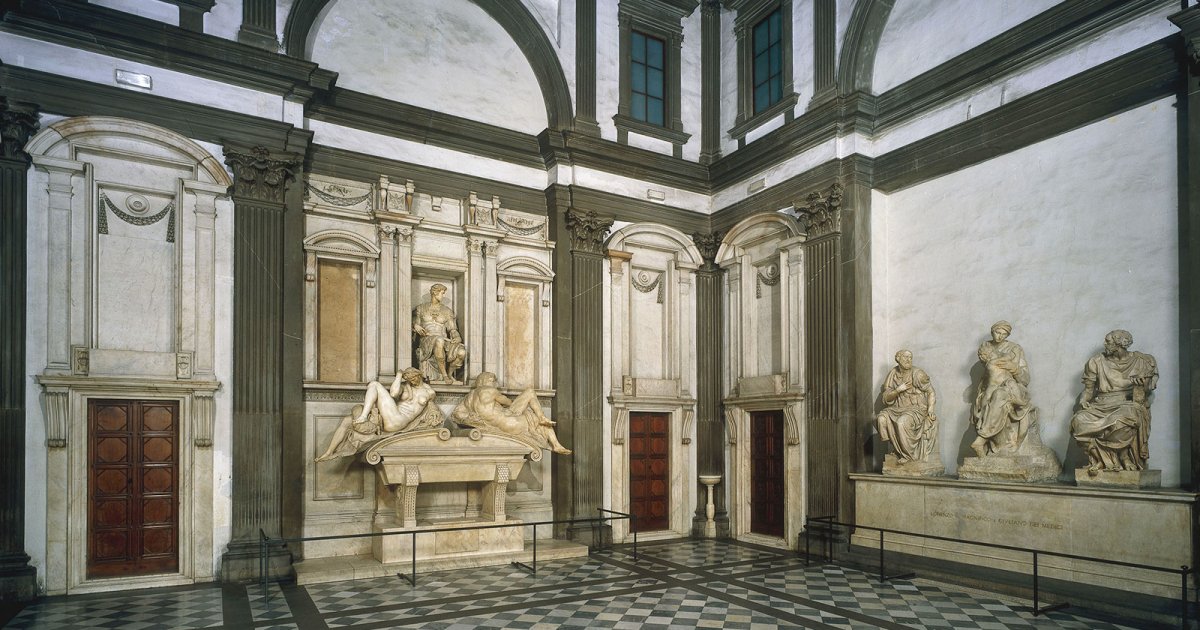MEDICI CHAPELS, New Sacristy Architecture
 Language: English / USA
Language: English / USA
Once you exit the Chapel of Princes, a hallway takes you to one of the most famous places of the Renaissance: the New Sacristy designed and decorated by Michelangelo.
After the untimely death of two young members of the Medici family, in 1521 Pope Leo X, the son of Lorenzo de' Medici, also known as the Magnificent, asked Michelangelo to create a "new" family funerary chapel that was symmetrical to the "old" one built by Brunelleschi on the opposite side of San Lorenzo Church. The work stopped upon the pope's death and resumed two years later when another member of the family was elected to the papal throne, Clement VII, the nephew of Lorenzo the Magnificent.
As you can imagine, the New Sacristy was a great challenge for Michelangelo, who worked on it for over ten years and managed to achieve a perfect blend of architecture and sculpture. If you compare it with Brunelleschi's sacristy, the differences are quite obvious: his 15th-century one is a model of harmony and proportion, while in an identical space, Michelangelo designed a complex, dramatic interior with a strong contrast between the white walls, gray profiles in stone, and the refined decorations. I suggest carefully viewing the architecture from various points of view, and especially from the small area behind the altar.
Perhaps because he also had to deal with the furnishings such as the altar and marble candelabra, Michelangelo proceeded slowly. When he finally left Florence for Rome in 1534, the works were not yet finished, and Vasari completed the unfinished parts.
Along the entrance wall, don't miss Lorenzo the Magnificent's tomb: it is a simple marble box decorated only with the splendid marble group of Madonna and Child by Michelangelo, who in this case gave the masterpiece a spiraling movement with the figures turning upon themselves. The statues of the Saints Cosma and Damiano that you can see side by side are by Michelangelo's students: the two saints are the protectors of the Medici family and also medici in general, which means doctors in Italian!
At the side of the altar, do you see how there are two small sitting rooms that look like small... sacristies in the sacristy? Traces of Michelangelo's drawings have been found on the walls that depict architectural details and grotesque figures.
FUN FACT: do you know why Michelangelo went to Rome, leaving the job unfinished? Because he had sided with the Florentine Republic against the Medici, and when they returned, he hid in an underground cell just below the Medici Chapels. But then the pope forgave him and he went back to Rome.



